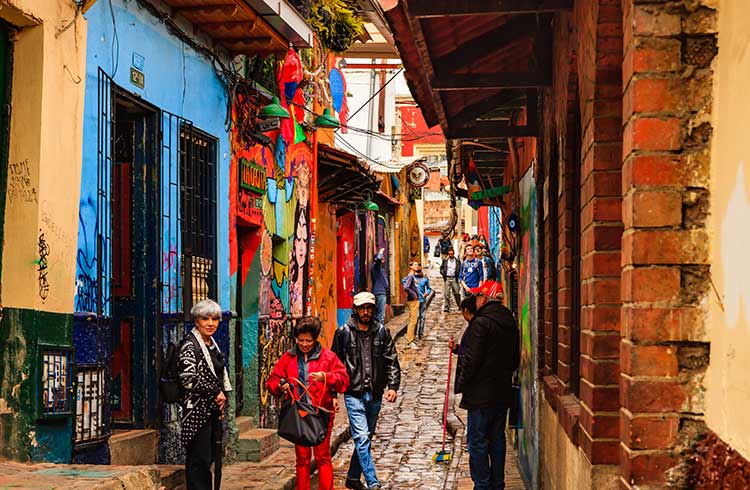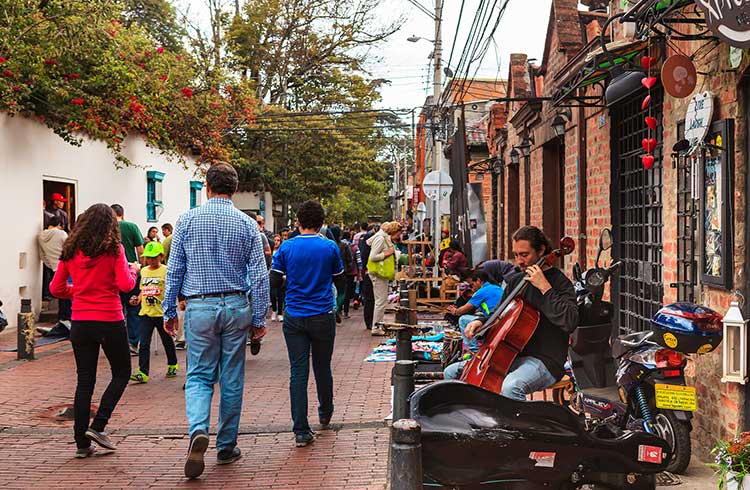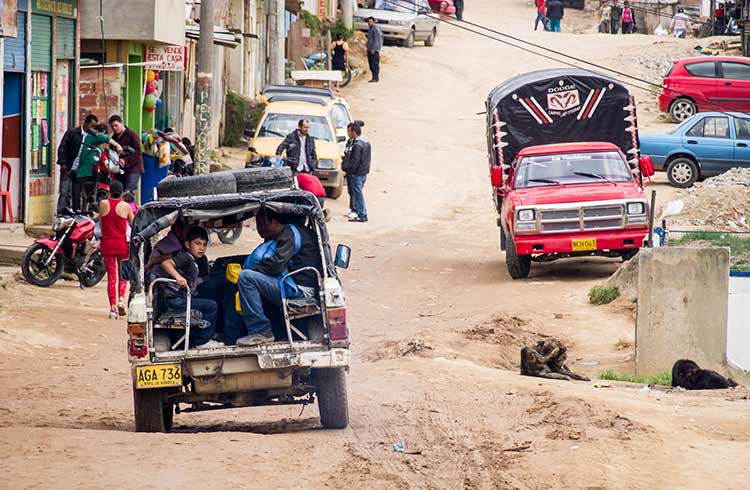How to See the Best of Bogotá in 24 Hours
Only have one day to spend in Colombia's capital city? Experience the local culture and discover the best things to do with this 24-hour itinerary from our local insider, Jacqui.
 Photo © iStock/Devasahayam Chandra Dhas
Photo © iStock/Devasahayam Chandra Dhas
Cerro de Monserrate
First stop is Bogotá’s 400-year-old landmark Cerro de Monserrate, via a fun cable car ride.
The spectacular views from this iconic, 3,152m (10,341ft) mountaintop – with a church dedicated to the Fallen Lord – lets you drink in the enormity of this populous city, and see how all its glory fits perfectly between the mountains.
While you're here, pick up some souvenirs at the small market behind the church and sample some of the local food.
Culture in La Candelaria
When the city disappears behind the clouds, head back down and take the free shuttle to Bogotá’s historical center, La Candelaria.
This is where Bogotá was originally founded – in Plaza Chorro de Quevedo to be exact. It's home to many gorgeous colonial churches (Iglesia de San Francisco is the oldest) and the city’s greatest concentration of museums.
Discover Pre-Colombian cultures at the famous, world-class Museo del Oro; art lovers will swoon at the Botero Museum and the Bogotá Museum of Modern Art; understand Colombia’s national history at the city’s oldest and biggest museum, the National Museum; while the Museo Internacional de la Esmeralda (Emerald Museum) and the stunning Museo Santa Clara (located inside an ornate Baroque church) also tell a good story.
During your exploration, there'll be many opportunities to try street food and snacks – a warm arepa or almojábana goes well with a hot chocolate or coffee.
Lunchtime
Lunch is the main meal of a Colombian’s day. Most restaurants offer a set menú del dia, “today’s menu,” that usually includes soup, a main dish, and a drink. A common dish is ajiaco, a traditional and delicious chicken and potato soup popular in the Andean region.
Usaquén
Next, taking the M82 TransMilenio bus from San Victorino TransMilenio Station north along Septima (Carrera 7), you arrive at Calle 119 and the charming colonial neighborhood of Usaquén.
Take a leisurely stroll through the picturesque narrow streets lined with original colonial houses; most homes have been converted into top-notch restaurants, bars, and cafes.
Having a coffee and cake stopover here will be a good decision.
Other interesting sights include the Iglesia de Santa Barbara and the Hacienda Santa Barbara, which is now a shopping center.
If you happen to pass here on a Sunday, you’ll have the opportunity to browse the little stalls of the popular flea market. Anything and everything is sold here, from handmade jewelry, paintings, ornaments, health remedies, and clothes, to food and drinks.
Zona Rosa and Chapinero
Leaving Usaquén behind, walk two blocks to Calle 117. Hop on TransMilenio bus 544B heading south, and get off at Andino Commercial Center in the Zona Rosa.
How to ask someone to tell you when to get off: “me avisa por favor cuando lleguemos al Centro Comercial Andino.”
The Zona Rosa, “pink zone”, is located between Calles 79-85 and Carreras 11-15 and is one of Bogotá’s snazziest districts. There are dozens of restaurants, pubs, cafes, boutique stores, dance clubs, and shopping malls to help wrap up your day in style and comfort.
South of the Zona Rosa is Chapinero, an expansive area consisting of several diverse neighborhoods.
Foodies can go wild in the exclusive Zona G (Gourmet Zone) district, found between Calle 67-72 and Carrera 3-9, where there are an immense variety of first-rate restaurants.
Related articles
Simple and flexible travel insurance
You can buy at home or while traveling, and claim online from anywhere in the world. With 150+ adventure activities covered and 24/7 emergency assistance.
Get a quote


No Comments